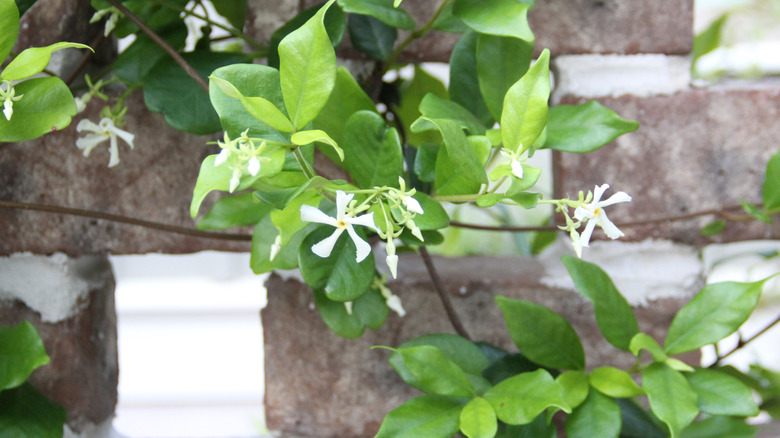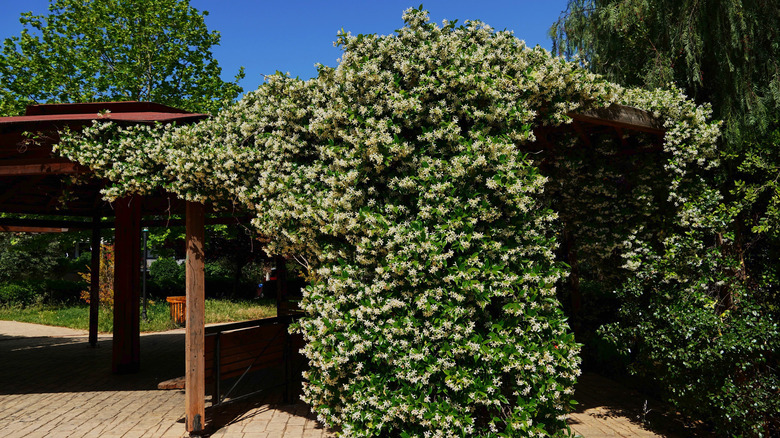Fertilize Star Jasmine The Right Way For An Extra Burst Of Fragrance
If you want to perfume your yard, star jasmine (Trachelospermum jasminoides) is definitely the way to go. That is, if you know how to cultivate its brilliant blooms. Without the right support, you may never see why this beautiful evergreen vine is considered one of the best climbing plants to add shade and beauty to your pergola. One thing you can do to support the flowering that gives off its intoxicating scent is to fertilize your plant. The right way to do this is in the spring with either compost or a general fertilizer.
Native to Japan and China, star jasmine is a largely independent plant — it has literally earned awards for growing reliably. While not classified as an invasive species, it is known to grow quickly. In a foreign environment, however, sometimes star jasmine needs a boost. It grows best in USDA Plant Hardiness Zones 8 through 10, and can even grow in zone 7 when properly protected from cold winds. As conditions change, star jasmine's fertilizer needs change as well.
Maintaining star jasmine
Star jasmine is not a plant that needs a lot of help. You must know how much fertilizer you really need in your garden so you do not over-fertilize your plant or pollute your environment. Starting slowly, add a compost when planting. You can use any organic compost or, for potted star jasmine, a loam-based compost.
Ground plants have different needs than potted plants. If your star jasmine grows from the ground, fertilizing once in the early spring is often enough — you do not want to overwhelm the plant. Generally, you can feed it with any slow-release all-purpose fertilizer that lasts for three to four months.
Potted star jasmine plants, on the other hand, may benefit from a monthly liquid fertilizer, applied from the spring to early fall. This is because potted plants absorb the nutrients of their smaller space faster. A high-potassium tomato fertilizer can also be utilized in potted star jasmine plants to encourage flowering. You could even try one of the DIY tomato fertilizers to help your plants thrive. Just be sure to stop fertilizing before September, as any new growth won't be hardy enough to withstand the approaching winter.

